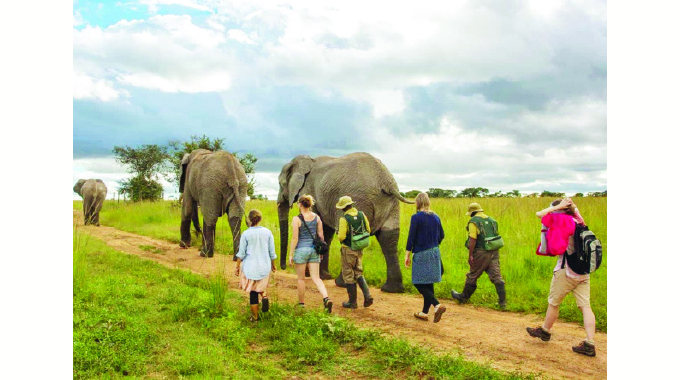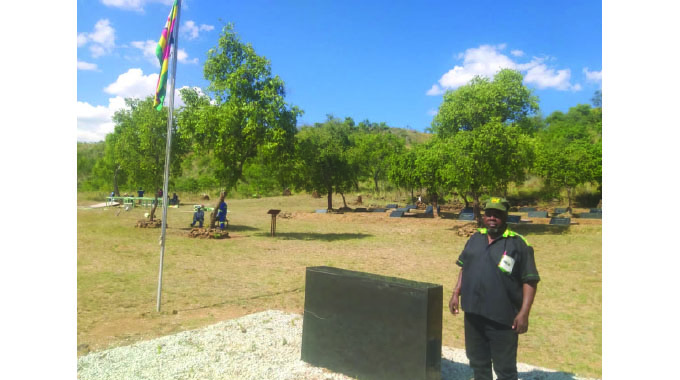Human, wildlife conflict threatens natural resource management

Johnson Siamachira in Binga
People in Lubu village and surrounding areas in Binga District in Matabeleland North Province, live in fear of, and alienation from, wildlife.
Over the years, the community has lost relatives, neighbours and livestock after they were killed by wild animals and crops destroyed by marauding elephants and quelea birds.
In the late 1950s, the colonial Rhodesian government displaced about 67 000 Tonga people from their ancestral, ecologically rich Zambezi River plains to pave way for the construction of the World Bank funded hydroelectricity generating Kariba Dam.
They were forcibly resettled in a parched stretch of earth not far from Chizarira National Park, an unfenced expanse of virgin bush teeming with a variety of wildlife – lions, hyena and elephants, among other things.
And, for the last 66 years, the people have stood by helplessly as predator animals killed their cattle, and herds of elephants destroyed their maize fields.
They were outlawed to hunt the animals, instead, they were themselves hunted down by wildlife officers.
Now, residents of Lubu and neighbouring villages have installed electric fences that have allowed them to achieve the unheard-of feat of twice maize harvests in a year.
The fences are not always effective – a herd of elephants can make short work of them – but the villagers can now afford replacements.
The money comes from the Communal Areas Management Programme for Indigenous Resources, or CAMPFIRE, a community-based natural resources management programme established in 1989 by the then Department of National Parks and Wildlife Management, now Zimbabwe Parks and Wildlife Management Authority (Zim Parks).
The idea behind CAMPFIRE is simple: promote a modus vivendi between man and beast by giving rural communities greater control over the management of wildlife and other natural resources in their areas – letting them decide, for example, how to best thin animal numbers and reward them with a substantial share of the revenues the local fauna generate through trophy hunting and other fees.
Animals that are a constant source of trouble when alive can be extremely valuable when dead.
The CAMPFIRE programme operates in 58 of Zimbabwe’s 60 districts, involving 120 wards with around 800 000 households.
Of these districts, 14 are active and still have thriving wildlife populations and other natural resources.
The programme also helps to protect some 50 000 square kilometres of wildlife habitat in communal areas countrywide.
But the CAMPFIRE programme has not fully addressed human-wildlife conflict challenges, and this is threatening natural resources management efforts.
“As soon as farmers see a wild animal, their first instinct is to think that it will attack them,” says Kevin Mfishani, CAMPFIRE Association project officer.
“In most wildlife areas, elephants are walking over huts and killing people in the process. In Mbire district, in Mashonaland Central Province alone, three people were killed in crocodile attacks in the past month.
“But when real material benefits come in, they are very impressed and feel it is worth conserving wildlife.’’ In practice, the programme has had mixed results.
Since wildlife is not evenly distributed throughout the country, some communities are more endowed with wildlife than others, especially the large mammals that pull in ecotourists and big game hunters.
Farmers in areas bereft of game are denied CAMPFIRE’s largesse on the grounds that they do not bear
the cost of living with wild animals.
Human-wildlife conflict can take various forms, including human encroachment into protected wildlife areas for settlement and agricultural purposes, carnivores attacking and killing livestock or humans, species raiding crops, competition for game and/or resources, wild animals invading communal areas in search of drinking water, disease exchange between livestock and wildlife, carcass poisoning and retaliation killing.
The most affected areas in Zimbabwe are Mashonaland West, Mashonaland Central, Matabeleland North, Matabeleland South and Masvingo provinces.
Jane Mwinde of Sinakoma, in Ward 5 in Binga district worries about her family’s perpetual food insecurity as annually, elephants destroy their crops.
“Every year, we do not get any harvests because of the rampaging elephants which destroy our crops. This leaves us highly vulnerable to hunger and starvation,’’ she laments.
In Malipati area of Chiredzi district in Masvingo province, crocodile attacks on humans and livestock have been on the increase since 2018.
Hlowani Musoliwa(52) lives in Ward 15 (Malipati) in Sengwe communal lands. It is located in the Great Limpopo Transfrontier Conservation Area or TFCA, a transboundary area between South Africa, Mozambique and Zimbabwe, grouping mostly unfenced protected and rural areas with abundant wildlife.
Here, human-elephant and human-predator conflicts impact agricultural and livestock production.
Read full story on www.herald.co.zw
In 2021, Musoliwa lost five cattle to crocodile attacks.
According to ZimParks spokesperson, Tinashe Farawo, 68 people lost their lives countrywide due to wildlife attacks in 2021, while 66 lost their lives in 2022.
Zimparks advised people to avoid travelling during the night, not to provoke wild animals and to give them space.
To address all these challenges, local conservation non-governmental organisations are working with CAMPFIRE, Government and other stakeholders to reduce human-wildlife conflict.
One of the schemes operating in wards 3, 4 and 5 of Binga district is the Sustainable Wildlife Management (SWM) Programme.
This is an international initiative to improve the conservation and sustainable use of wildlife in forest, savannah and wetland ecosystems.
The Food and Agriculture Organisation (FAO) is in charge of co-ordinating the initiative in Zimbabwe, which is funded by the European Union.
Implementation is carried out by the French Agricultural Research Centre for International Development (CIRAD) with support from Binga Rural District Council and the Ministry of Environment, Climate, Tourism, and Hospitality Industry.
CIRAD’s SWM programme co-ordinator for Zimbabwe, Maxwell Phiri says his initiative is focusing on co-existence and minimum conflict between people and wildlife.
“We are promoting approaches to reduce human-wildlife conflict. These include use of pepper strings and briquettes against elephants,’’ he said. “We also promote use of watch towers to look out for
animals and birds in crop fields. Bomas against livestock predators, and construction of secure kraals are also used to deter the predators.”
Other strategies used by the programme include promotion of land use planning through the community conservancy model to integrate management for multiple uses and for sustainability of the available resources.
CAMPFIRE is also engaged in various human-wildlife mitigatory activities across the country.
“We use a range of functional user-friendly deterrent systems for the main wildlife species (elephants and
carnivores) involved in human wildlife conflict. Ensuring that humans and animals have enough space to thrive is also the basis of human-wildlife conflict resolution,” said Mfishani.
Sustainable wildlife management is the key to human-wildlife conflict resolution in Zimbabwe.
Local conservation experts say people must come first, and recommend a pragmatic approach where wildlife is sustainably used for the benefit of local people to give them an incentive for its conservation. – New Ziana







Comments